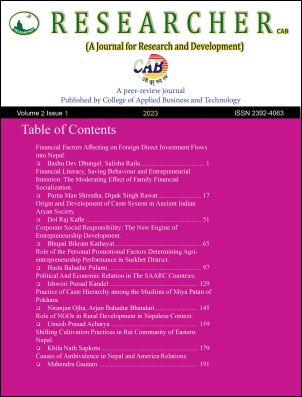Practice of Caste Hierarchy among the Muslims of Miya Patan of Pokhara
DOI:
https://doi.org/10.3126/rcab.v2i1.57648Keywords:
Saiyed, the Untouchables, Hindus, Upper caste, hierarchyAbstract
In a country like Nepal, where Hindus make up the majority of the population, the study of religious minorities reflects its importance. A distinctive form of stratification is caste. Hindu concepts and arguments can be used to understand and explain this occurrence, which is solely a Hindu phenomenon. Caste is widespread outside of the Indian Subcontinent, in the Arab world, Polynesia, North and East Africa, Japan, and North America. The Muslim community follows a system of hierarchy and upholds caste purity just like the Hindu community. Similar to Brahminism in Hindu society, Saiyedism in Muslim society (the Arab domination) is a major contributor to caste prejudice in the Muslim community. Based on qualitative study, this article describes the critical actions that must be taken at each level of the caste hierarchy. With the use of an observational technique, in-depth interviews, and library research, the subject is being generalized. For the objective of knowing more, Muslim scholars and elder people who had witnessed the practice were chosen as the respondents. Because they requested anonymity, the respondents are referred to as Res.1, Res.2, Res.3, and so forth. The focus of this investigation is Miya Patan’s Muslim’s caste hierarchy. This article is limited to historical study among the Muslims of Miya Patan of Pokhara. It is not concerned with other aspects of the study area. It makes an effort to address the problem of caste hierarchy among Muslims in Nepal.




